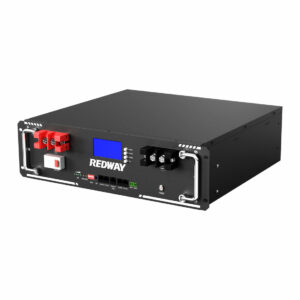Should server racks be grounded?
Server racks must be grounded to ensure electrical safety, prevent equipment damage from power surges, and mitigate electromagnetic interference (EMI). Proper grounding creates a low-resistance path (≤5 ohms per NEC 250.53) for fault currents, protecting personnel and hardware. It also stabilizes voltage references for sensitive electronics. Racks grounded via 6 AWG copper wire to building steel or ground rods comply with NEC Article 250 and IEEE 1100 standards.
Why is grounding critical for server racks?
Grounding server racks prevents lethal shock hazards, directs lightning/surge currents safely to earth, and reduces EMI disrupting network signals. Ungrounded racks risk arc flashes during faults and create “floating” voltage potentials that corrode equipment. Pro Tip: Use green 6 AWG grounding conductors with UL-listed lugs for code-compliant installations.

Technically, server racks require a equipment grounding conductor (EGC) bonded to the rack’s main frame and connected to the facility’s grounding electrode system. The National Electrical Code (NEC 250.96) mandates all metallic enclosures housing electrical conductors to be grounded. For example, a 42U rack with 10kW IT load experiencing a 240V short circuit would channel 4,000A through the EGC, tripping breakers within 0.1 seconds. Pro Tip: Install temporary grounding straps when adding/removing equipment to avoid static discharge. But what if the rack’s paint blocks conductivity? Scrape paint at bonding points and apply antioxidant gel for optimal metal-to-metal contact.
What risks arise from improper rack grounding?
Improper grounding causes differential voltages, EMI-induced data errors, and fire risks from arcing. Floating racks can expose users to 50-100V touch voltages during faults. Case study: A 2022 Dallas data center outage traced to a rack grounded via undersized 10 AWG wire (8.5 ohms) melted during a 3kA surge, destroying $200k in SSDs.
Common pitfalls include daisy-chaining racks (increases impedance), using aluminum conductors without anti-corrosion paste, and neglecting periodic ground resistance tests. A ground potential difference (GPD) over 1V between racks can induce currents in Ethernet cables, corrupting packets. Pro Tip: Measure rack-to-rack voltage with a multimeter monthly—readings above 0.5V signal grounding issues. Transitional example: Consider how a poorly grounded rack acts like a capacitor, storing charge until discharged through a technician’s touch. Why risk equipment lifespan? Implement star-topology grounding with individual EGCs to a common busbar.
| Risk Factor | Proper Grounding | Improper Grounding |
|---|---|---|
| Touch Voltage | ≤2V (Safe) | Up to 120V (Lethal) |
| Surge Dissipation | 0.5-2ms | Delayed, Causes Arcing |
| EMI Noise | -60dB | -20dB (Data Corruption) |
How does NEC regulate server rack grounding?
NEC Article 250 specifies server racks must have EGCs sized per circuit ampacity—6 AWG for ≤100A, 4 AWG for 200A. Grounding paths must maintain ≤1 ohm resistance from rack to earth. Violations risk NEC 110.3(B) noncompliance and insurance nullification.
The code requires bonding jumpers between rack panels and doors to eliminate potential differences. For racks with multiple PDUs, each must connect to the EGC via parallel conductors. Example: A 3-phase 400V rack drawing 80A per phase needs three 6 AWG EGCs (one per phase) plus a 4 AWG main ground wire. Pro Tip: Label all grounding points with UL-listed markers for inspector compliance. Did you know? European standards (IEC 60364-4-41) require TN-S grounding systems for IT racks, differing from NEC’s TN-C-S approach.
What tools test server rack grounding integrity?
Clamp-on ground resistance testers (e.g., Fluke 1630) and earth ground multimeters verify impedance (≤5Ω) and continuity. Fall-of-potential tests using auxiliary probes are gold-standard for new installations. Annual testing is mandated by NFPA 70B 2023.
Practical testing involves three steps: 1) Measure resistance between rack frame and ground bus (≤0.1Ω), 2) Check voltage gradients (≤2V AC) between adjacent racks, 3) Use a hi-pot tester to confirm 1,500V isolation between live parts and ground. Case study: After a 2023 Miami hurricane, a data center found 12 racks with 8-12Ω resistance due to flooded ground rods—remediated via chemical electrodes. Pro Tip: Document test results in CMMS systems; OSHA requires 5-year record retention.
| Tool | Function | Spec |
|---|---|---|
| Fluke 1623-2 | Earth Ground Test | 0.01-2000Ω |
| Amprobe GT-16 | Clamp Resistance | 0.1-1999Ω |
| Megger DET24C | Continuity Check | 0-10A DC |
How to ground racks in modular data centers?
Modular racks require grounding through the ISO container’s structural steel to an external grid (NESC 94). Use flexible tinned-copper braids (2/0 AWG) between modules to handle vibration-induced breaks. Pro Tip: Install surge diverters on module entry points for lightning protection.
Each pod must have its own grounding electrode system interconnected via grounding rings. For example, Microsoft’s Azure Modular DC uses 500 kcmil bare copper rings buried 30” deep around modules, achieving 0.8Ω resistance. What about temporary deployments? Mobile racks need fold-out ground spikes (Galvanized, 8’ length) and portable grounding mats for technician safety. Transitional note: Beyond physical connections, fiber-optic links between modules reduce ground loop risks compared to copper Ethernet.
RackBattery Expert Insight
FAQs
Can you ground a server rack to a raised floor grid?
No—raised floors lack NEC-compliant earth bonding. Always ground racks to building steel or concrete-encased electrodes (Ufer ground) per NEC 250.52(A)(3).
Does a UPS eliminate grounding needs?
No—UPS systems require grounding too. Floating a UPS input neutral can create 277V hazards in 480V systems. Bond neutral and ground per NEC 250.142(B).
How often should ground connections be inspected?
Bi-annually for corrosion/looseness. Use NOALOX on aluminum lugs. Torque bolts to 50 in-lbs for 3/8” lugs—vibration can loosen them by 15% annually.



